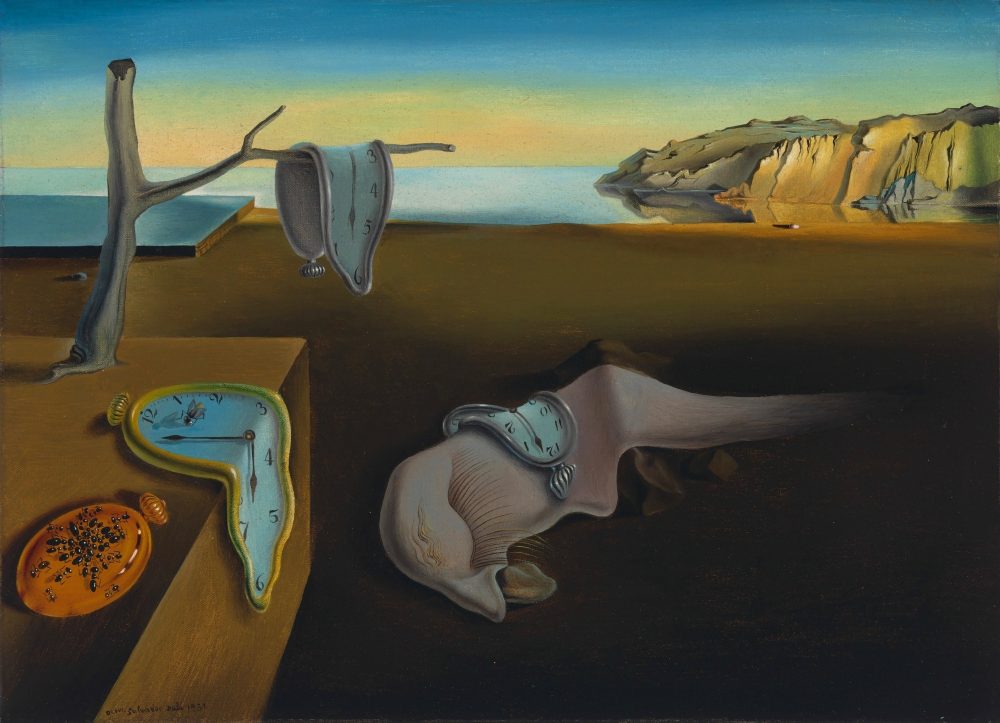Salvador Dalí
Fundamental Paintings to Understand the History of Painting
We could make this publication thanks to small donations. How is 3 minutos de arte supported?
The Persistence of Memory (1931). Salvador Dalí
Oil on canvas. 33 x 24.1 cm
Moma. New York, United States
Disturbing, eccentric, controversial, provocative, admirable in many people’s opinion and a disgusting arrogant for other people. Dalí is the artist taken to the extreme. He goes beyond creating a universe: he is the center of the universe.
He recognized in his Unspeakable Confessions that in order to overcome his pathological shyness, he adopted a strongly exhibitionist attitude since he was a little child. And his strategy worked, rising his self-esteem to the clouds.
He was associated for a while to the Surrealist movement, then he developed his own method against the “psychic automatism.” He called it “paranoiac-critical method,” and defined it as a spontaneous system of irrational knowledge, “based on the interpretative-critical association of delirious phenomena.”
In simple words: he interpreted reality or his vision of things with delirious associations. And a great example of this is this work, in which to explain his vision of time as something psychological, he associates time with camembert cheese.
The painting of the “limp watches” is an allegory of the disintegration of the present and the matter. (If we observe carefully that soft mass under one of the watches, we may discover or at least suspect that is Dalí himself, disintegrating).
The myth is that the “delirium” this work provokes came from the hallucinations he had after eating that camembert cheese. Whether this is true or not, Dalí commented: “Be persuaded that Salvador Dali’s famous limp watches are nothing else than the tender, extravagant and solitary paranoiac-critical Camembert of time and space.”
May be the character ate the artist or Dalí was a true crazy man with a great painting technique. Freud —who submerged in the depth of the unconscious and whom the Surrealists considered their guide— wrote in his diary about him after their meeting in person: “I was inclined to look upon the Surrealists, who have apparently chosen me as their patron saint, as absolute cranks (let’s say at 95 %, as pure alcohol). The young Spaniard, however, with his candid fanatical eyes and his undeniable technical mastery, has made me reconsider my opinion.”
Recommended links:
“I declare the independence of imagination and the rights of man to his own madness.”
Salvador Dalí and his Paranoid-Critical Method.
Fundamental Paintings to Understand the History of Painting: The Treachery of Images, Magritte.
You can also find more material using the search engine.




0 Comments